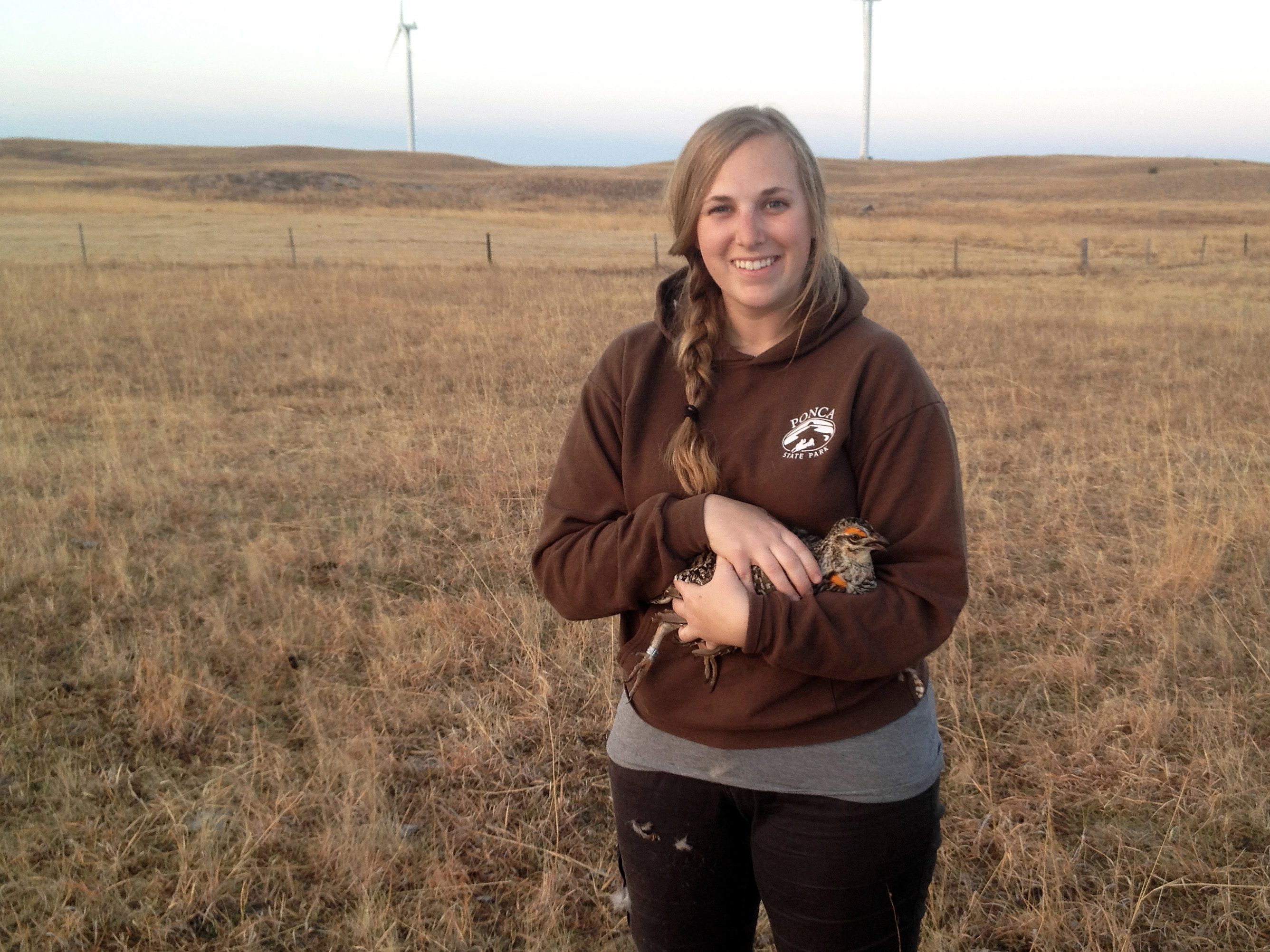
Rapid development of wind energy across the Great Plains has spurred concern about potential effects on grassland birds, the most rapidly declining avian group in North American. But a new study by University of Nebraska-Lincoln researchers shows that at least one grassland bird — the endangered greater prairie-chicken — pays little attention to small-scale wind energy infrastructure in choosing nesting sites.
Grassland management and proximity to roads, on the other hand, still play the most dominant role in where the birds choose to nest and whether they survive.
The research, led by Jocelyn Olney Harrison of the School of Natural Resources, examined a small, pre-existing 36-turbine wind facility in the Nebraska Sandhills, a mostly unfragmented landscape where prairie grasses offer prime habit for prairie-chickens.
Over two years, Harrison and her colleagues, Mary Bomberger Brown, Larkin Powell and Jennifer Smith, all of SNR, and Walter Schacht, of the Department of Agronomy and Horticulture, captured 78 female prairie-chickens at breeding sites and fitted them with transmitters to track them to their nests. Some were as close as one kilometer to the wind energy facility; others as far away as 20 kilometers.
A prior study by researchers in Kansas had suggested prairie-chickens might avoid turbine fields, which would be perceived as areas at high-risk for predators that typically perch on tall structures and power lines. But what the Nebraska researchers found was that some prairie-chickens nested very close to both turbine fields and transmission lines. What appeared to be more important in choosing their nesting site was grass cover.
"Prairie-chickens in our study nested in areas with twice the cover of residual standing dead vegetation in random sites," Harrison wrote. Land-use practices, such as grazing, therefore would have a greater impact on nesting and survival than proximity to wind energy fields.
The researchers also found prairie-chickens avoided nesting near roads, possibly due to increased risk of predation or possibly due to traffic noise. As wind energy facilities grow across the Great Plains, a denser network of roads likely would affect prairie-chicken populations and their habitat, the authors noted.
More research is needed to address these variables, Harrison noted.
"When comparing previous studies to our own," she said, "it appears that the effects of wind energy facilities on prairie grouse are often site- and species-specific. Therefore, it's important to consider the results of our study in the context of the size and location of the wind energy facility, as well as the prairie grouse species investigated."
She and her colleagues recommend future energy development planners take into account potential negative effects roads and land fragmentation could have on greater prairie-chickens and similar grassland species.
The study, published this week in The Condor: Ornithological Applications, a peer-reviewed, international journal of ornithology, is available online here.
Shawna Richter-Ryerson, with contributions from AOS Publications